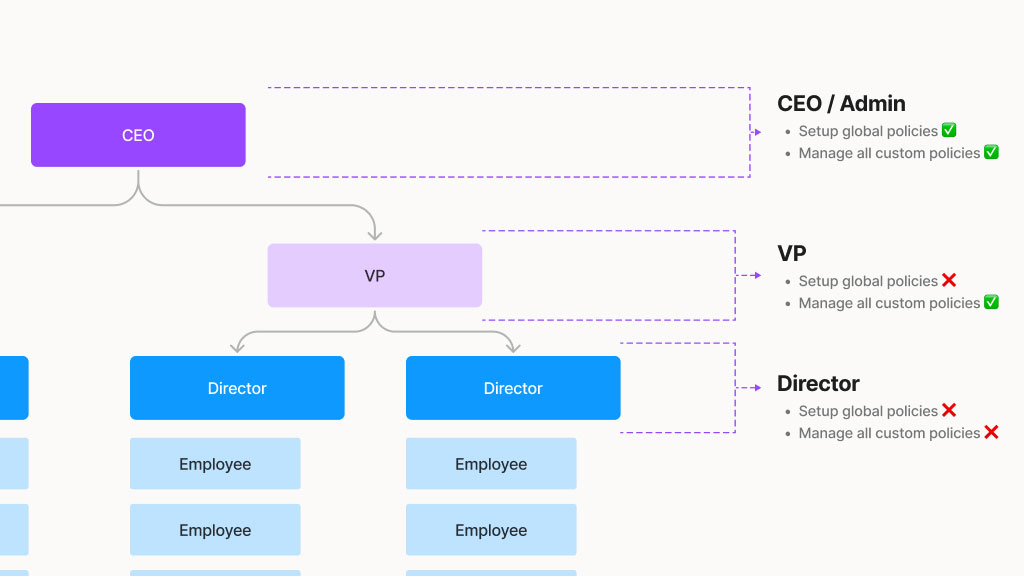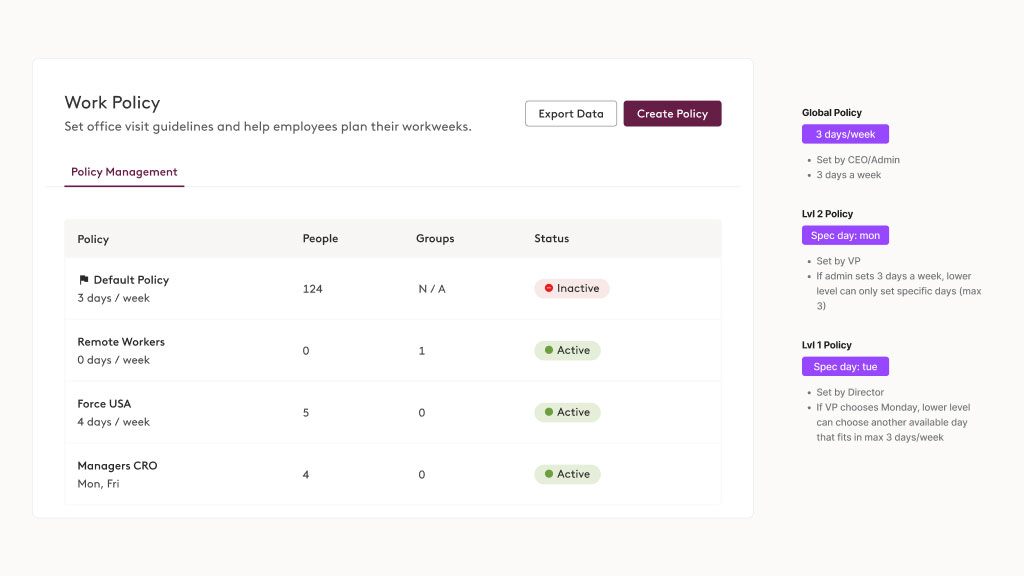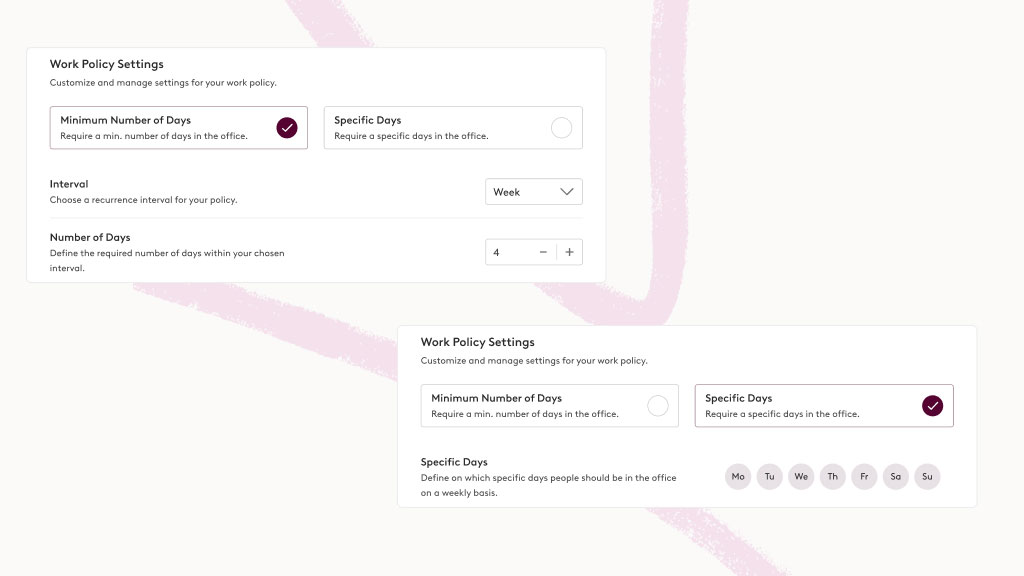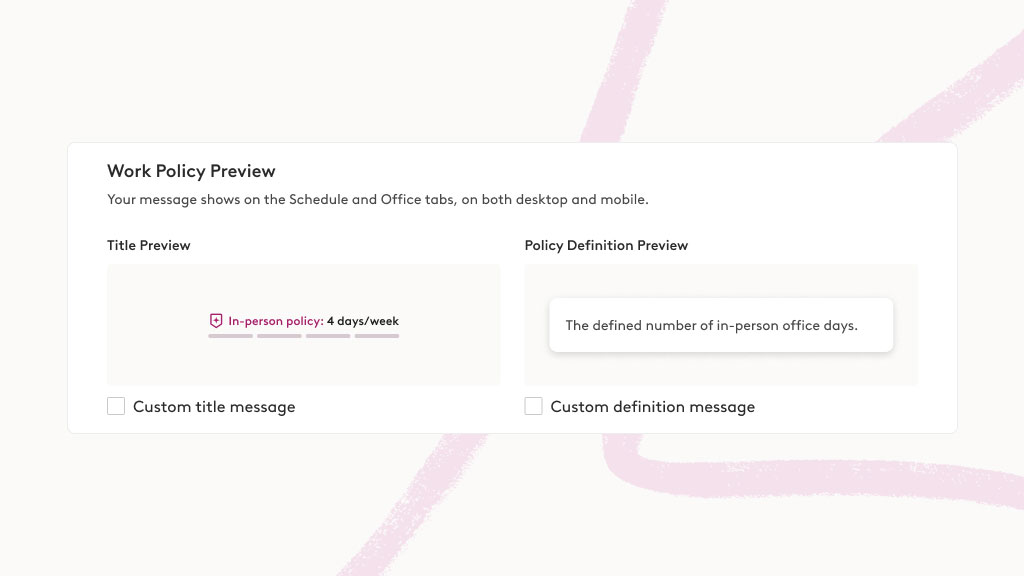Hybrid Policy
There is no blueprint for when and how to use the office. Many companies are moving away from fully remote work, but workplace flexibility continues to be important for employees.
As we move into this new era of work, there are leaders who want to offer total flexibility, while others desire more consistent office usage. No matter your strategy, workplace leaders must clearly communicate plans to employees, and regularly check in with them on how it’s working.
Problem:
There wasn’t a single product available that could support hybrid workplaces and strategies as they shift, and partner with leaders as they navigate the evolution of work.
One of our customers had to optimize their workplace strategy because they had a team that was growing by 37% in a limited office space. They were forced to make a decision on how to continue supporting employees, volunteers and clients without increasing real estate costs as their lease was about to expire. The traditional model seemed impractical, pushing our customers to seek a solution that would enhance flexibility and maintain cost efficiency.

SOLUTION:
New way for leaders to clearly communicate their in-office work policies, and for employees to track their own progress right where they’re already planning their workweeks. This eliminates guesswork associated with hybrid work policies, allowing employees more easily understand what’s expected of them, and for workplace leaders to get the data they need.
This strategic shift not only saved our customers 50% on real estate costs but also transformed their office into a flexible, collaborative space.

The original mindset was, everybody will be at the office, and now it’s the reverse. We’re wondering who will be in the office, and if so, can we collaborate? Robin is helping us think through those questions.

With a 73% monthly increase in office utilization since January 2022, our customers now operate with a more efficient office strategy that prioritizes staff comfort, flexibility, and positive impacts on work-life balance.

However, keep in mind that hybrid work exists to combine the advantages of remote work and on-site experiences while reducing the disadvantages.
Remote work provides nonstop concentration time rarely available within office settings, while the traditional workplace environment enables cooperation that is impossible when working from home. A hybrid working policy allows hybrid employees to have some time for work life balance as well as collaboration and connection moments.
Productivity and Proximity in the Hybrid Workplace:
By surveying 500 employers, the report offers valuable insights into the perceptions of hybrid productivity, aiming to help organizations streamline operations and adapt to the future of work.
Ready to learn more – Check out this report


